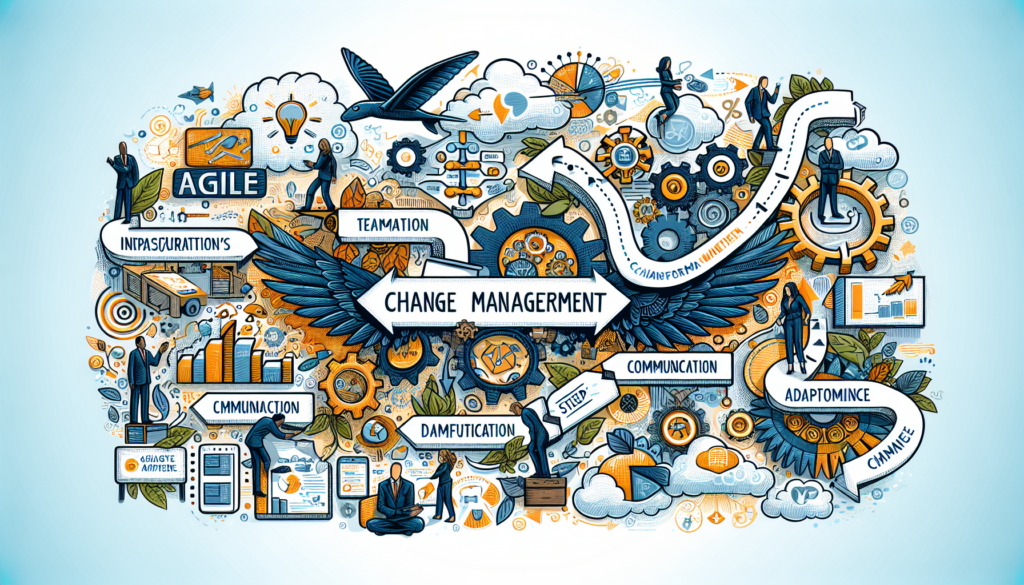In an increasingly dynamic and competitive business environment, agile methodologies have become a critical factor for operational efficiency and responsiveness to change. Change management, when aligned with Agile principles, can drive organizations to successfully adapt to fluctuating markets, changing demands, and technological advances. This article will delve into advanced Agile strategies for change management, exploring foundational theories, cutting-edge practices, and real-life cases that illustrate effective organizational transformation.
Agile Fundamental Principles in Change Management
Agile, initially conceived for the software industry, is a philosophy that focuses on flexibility, continuous delivery, and customer involvement. Despite its technological heritage, the implications of Agile extend beyond software development, offering a practical framework for broader organizational change.
The Agile Manifesto Framework
The Agile Manifesto sets forth four key values:
- Individuals and interactions over processes and tools.
- Working software over comprehensive documentation.
- Customer collaboration over contract negotiation.
- Responding to change over following a plan.
Although these principles originated in software development, their relevance is unquestionable in the context of organizational change management. Adaptability and collaboration are the pillars upon which an agile and change-responsive company is built.
Common Agile Methodologies
- Scrum: A framework that promotes iterative project management and leadership as a service.
- Kanban: A visualization system that uses cards to represent tasks and progress aimed at maximizing efficiency.
- Extreme Programming (XP): An approach that enhances software quality and responds to changing customer needs.
Practical and Advanced Applications
In practice, Agile requires organizations to adopt a mindset of continuous improvement and experimentation. Speed and adaptability are valued, utilizing short development cycles called “sprints,” which allow companies to adjust and continuously improve.
Integration of Multidisciplinary Teams
Agile teams tend to be cross-functional, with members from different disciplines working together based on the project rather than their department. This approach fosters more effective communication and a quick response to problems and changes.
Continuous Development and Delivery
Continuous delivery is vital for providing immediate value. This means that products or services are developed in smaller cycles, which allows for quicker feedback and the ability to make changes with less cost and effort.
Comparison with Traditional Methods
Unlike traditional project management methods, which tend to be more rigid and sequential (like the waterfall model), Agile promotes an iterative and collaborative development cycle. This translates into the ability to quickly adapt to new information and market conditions.
Innovations and Future Directions
Gamification in Agile introduces game elements into change management to increase team engagement and motivation. Moreover, the integration of Artificial Intelligence (AI) and Automation into Agile project tracking tools allows for predictive analysis and more accurate resource planning.
Real Case Studies
Spotify and the Squad Model
Spotify is a prominent example of successful large-scale Agile adaptation. Using autonomous “squads,” “tribes,” and “guilds,” Spotify has created a structure that supports team autonomy and promotes accountability and shared ownership of the product.
ING and Banking Transformation
ING transformed its corporate culture and operations by implementing Agile. Integrating cross-functional teams called “squads,” the organization improved collaboration, speed, and quality of customer service, demonstrating Agile’s applicability beyond the technology sector.
Conclusion
Implementing Agile in change management is not merely about adopting a new set of processes, but fostering a culture of adaptability and continuous learning. Organizations that master Agile principles not only stay at the forefront of innovation but also possess the resilience necessary to thrive in the global market.
Therefore, businesses that wish to lead the transformation in their field must consider Agile not as a methodology, but as a philosophy that guides every aspect of operation. They continuously investigate, adapt, and forge new directions to remain relevant and effective in an ever-changing world.

